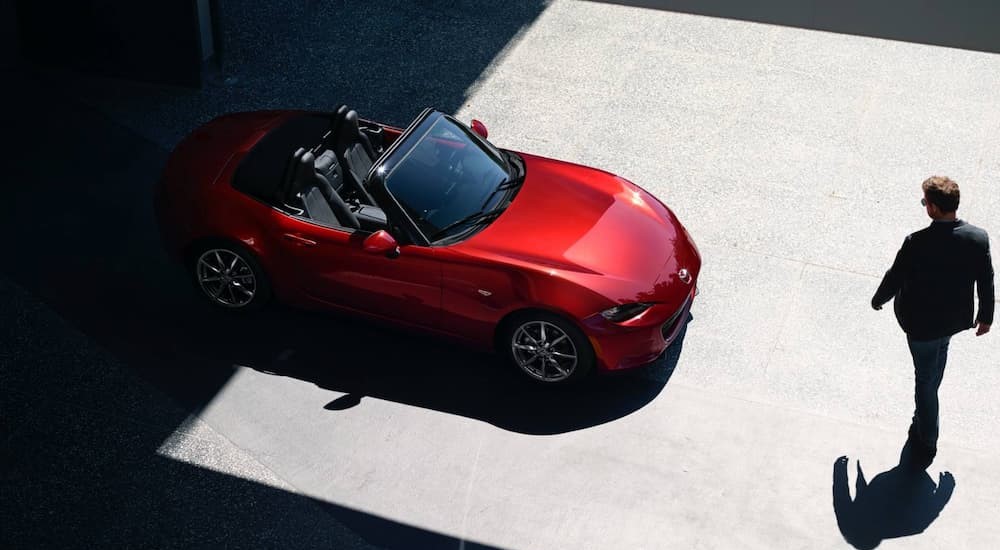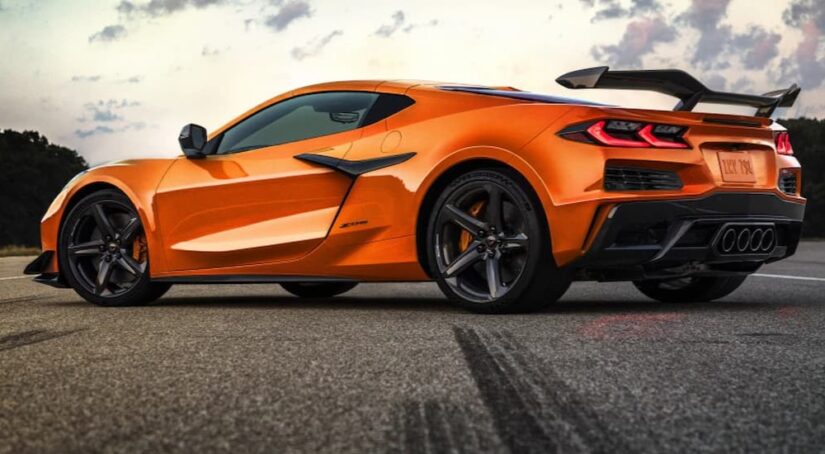Few things run the gamut from functional to fun like automobiles. At their most basic, they’re just a way to get around; a no-nonsense, nondescript tool tailor-made for relatively short-distance traveling. But the upper end of the market is a whole different story, containing luxurious works of functional art that are almost as fun to look at as they are to drive. It’s like comparing a bottle of high-end wine to that glass jug of vino you can pick up at the gas station: both get the job done, but only one will be a decidedly enjoyable experience. Those who have yet to sit behind the wheel of a high-performance vehicle might not understand the appeal, but spend an afternoon adding some miles to the odometer and you’ll see how it could quickly become an obsession.
If you’ve been looking for an excuse to take a walk on the wilder side of the automotive market, we’re more than happy to give you one: it’s time for you to consider a performance car. There are many reasons to take a closer look at a sports car, from unmatched style and performance to resale value, enjoyability, and more. Let’s run down some of the top reasons to splurge on a performance vehicle and see why drivers keep returning to this intoxicating segment time and time again.

Style
Let’s get this out of the way so that no one can accuse us of burying the lede: performance cars look cooler than the average vehicle. Sure, their high-performance engineering and drivability arguably play a bigger role, but if you’re looking to turn heads, a well-designed performance vehicle will do the trick every time. These vehicles represent automotive design at its finest, giving some of the industry’s most talented minds a chance to flex their artistic muscle through the expert deployment of steel, aluminum, plastic, and rubber.
Modern cars have come a long way from the automobiles of old, boasting next-generation safety technology, superior fuel economy, and a long list of entertainment and comfort features—but they’re not exactly bursting with style. The auto industry is a big business, and business is all about minimizing risk, so if an automaker is faced with a choice between producing a one-of-a-kind design that might flop or rolling out the same well-worn template, they’re going to err on the side of caution every time. Just glance out your window the next time you’re rolling down the highway, and you’ll quickly run out of fingers on which to count the nearly-identical white, gray, and black mid-size crossover SUVs.
Sports cars are immune to this trend for a number of reasons. First off, they’re typically produced in much smaller numbers than mainstream options. Second, performance buyers aren’t often scared off by aggressive styling cues and innovative designs; in fact, they often flock to them. Take the 1963 Corvette Stingray, for example. Built with a unique rear split window, the model has achieved legendary status thanks in no small part to the bold design choice. Performance vehicles allow automakers to take more risks, resulting in some truly innovative designs that hold the potential to become instant classics.
Performance
For most drivers, the most compelling reason to invest in a performance vehicle is, well, its performance. From improved acceleration and top speed to responsive cornering and control, performance vehicles offer a driving experience that’s worlds away from your run-of-the-mill family sedan. Some of this comes down to how the vehicle is designed. Sports cars typically ride lower on the road, giving them a lower center of gravity and thus making for a more responsive ride—but what’s under the hood makes all the difference. Sports cars host all the necessary equipment to inject a little thrill into your everyday driving, from powerful engines and heavy-duty brakes to sports tires and suspension. They’re also typically smaller and lighter than other types of vehicles—an approach that improves maneuverability, speed, and acceleration at the cost of cargo room and, in some cases, comfort.
This approach differs from the average, mass-produced vehicle in a number of ways. When automakers set out to design a new marquee sedan or SUV, it’s often a juggling act focused on appealing to the broadest number of drivers. This approach might make sense from a business standpoint but it can result in some underwhelming vehicles that, in trying to please everyone, please no one at all. Sports cars take a different approach, with engineers focusing on delivering a ride that, at the very least, has the potential to make your hair stand on end. The result might be a little too aggressive or sensitive for the average driver, but for those seeking some high-speed thrills, it’s all part of the fun.
Resale Value
If you’re looking to justify your interest in performance vehicles to your accountant, allow us to present Exhibit A. Even those who know little about the inner workings of the auto market have probably heard the old maxim about a car losing a significant portion of its value as soon as it’s driven off the lot—but, like many common sayings, that’s not entirely accurate. While it’s true that vehicles do start to lose their value immediately after purchase, some models fare much better than others. The average car will lose around 15 to 20 percent of its value every year, with an average five-year depreciation of 60 percent. Sports cars tend to fare much better when it comes to this particular metric, with an average five-year depreciation of just 48 percent. It’s an eye-opening stat and one that makes the high sticker price of these models a little easier to stomach. The Porsche 911—a collector’s car if ever there was one—boasts a five-year resale value of 58.3 percent thanks in part to its classic styling, reputation for performance, and red-hot resale market.
Don’t get us wrong. Performance vehicles aren’t the best money-making investment, per se, as the ideal investment should gain value over time. There are some exceptions, like if you were fortunate enough to buy a 1961 Ferrari 250 GT California Spider at retail back when it first hit the dealership, and you managed to flip it for a cool $18.1 million at auction; but, for the most part, all but the most “classic” of cars are going to lose value over time. If you do your research and are savvy about which model you pick, it’ll be easier to ensure that the ravages of time and market demand don’t have an undue impact on your wallet. Still, note that not every model can be a unicorn (or, in this case, a Spider).
Customization
At their core, sports cars are an expression of the self; a chance to set yourself apart from the workday cars, trucks, and SUVs you pass every morning on the way into the office. With their alluring style, high-speed performance, and nimble handling, you’re sure to garner some envious looks from passersby—but what if that isn’t enough? Customization is a longstanding hobby in the gearhead community, who relish in tinkering with their rides almost as much as they enjoy driving them.
Today’s mainstream vehicles offer more customization options than ever before, with different trims, appearance, and equipment packages, allowing drivers to create a truly unique vehicle out of something already unlike anything else on the market. A recent study by Edmunds found that customization has been on the rise over the last two decades as drivers increasingly opt for higher trims and more features. Since 2002, there has been a 14 percent rise in the price between the base model vehicles on offer and the well-equipped versions that buyers actually drive away in.
This practice is even more popular in the performance market, where drivers are always looking for that one extra feature or option that’ll help set their ride apart. These options range from the modest—like upgrades to the lights, interior, or tires—to the drastic, with higher-power engines representing a particularly popular choice. Automakers have taken note of this trend, increasing their available equipment to include nearly all aspects of a chosen model.
And this only refers to the factory-installed options! Performance drivers are known to go above and beyond, installing their own aftermarket equipment to truly set their ride apart and test its limits on the road. From cold-air intakes and spoilers to customer wheels, LED lighting, custom upholstery, body kits, and more, a performance car provides the perfect excuse for never-ending experimentation and improvement. After all, sports cars aren’t the kind of vehicle that you take out on the weekend and then just forget about; they’re more of a hobby than a means of conveyance, with drivers spending ample time daydreaming about their next vehicle-related project. Customized sports cars can deliver unmatched swagger, amping up everything there is to love about the segment to the nth degree.
Dream Out Loud
From style and customization to performance and long-term value, there are plenty of reasons to get behind the wheel of a performance vehicle. While they might not always be the most practical choice on the road, few other segments can match the pure fun, style, and thrill of a proper performance vehicle. These typically carry a higher price tag than some more popular options on the road, but they might not be as out of reach as you might think. With financing options, project cars, and even a few diamonds in the rough waiting to be rediscovered, a performance vehicle could actually be well within your budget. Just remember to do your research and keep an eye out for any models that might come back to bite due to high-maintenance costs, frequent repairs, or a less-than-stellar reputation for reliability. Before you set out to buy your next unremarkable commuter vehicle, take a look at a performance car and consider treating yourself to a little taste of the good stuff.



